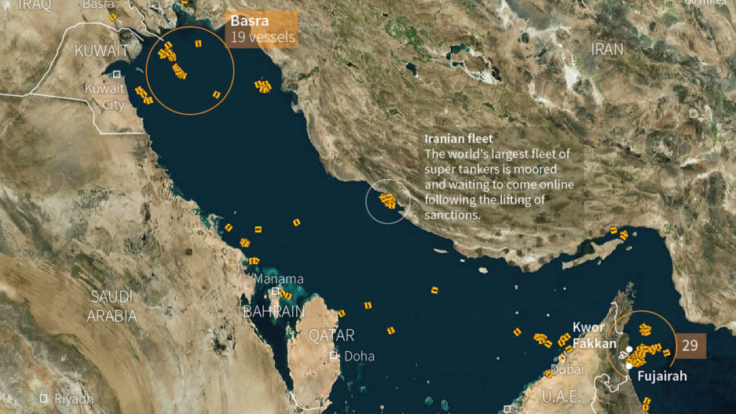Facing Sanctions, Iran’s Oil Tankers Go Dark
Sanctions are Coming
In May this year, the Trump administration announced its withdrawal from a 2015 nuclear deal with Iran, triggering a two-step phase-in of U.S. sanctions against Iran and entities doing business with Iran.
On November 5, sanctions went into effect that target Iran’s energy, shipping, and banking sectors, including vessels and banks called out by name. Ahead of the November deadline, Iranian oil tankers moving supplies offshore went “dark” in unprecedented numbers. To avoid the cost of shutting down production, Iran is continuing to pump and get oil into the market or into storage outside Iran.

Black Out
Sanctions against Iran aren’t new, and neither are Iran’s efforts to evade them. But in October, an unprecedented number — some 30 Iranian vessels — went dark by switching off their transponders to avoid international tracking systems.
Iran was working to preposition stores of oil in overseas facilities or in tankers off the Gulf coast in “floating storage” ahead of the U.S. sanctions that were re-imposed on November. Although the United States is granting partial “waivers” to eight major importers of oil from Iran, the waivers are designed to allow them to wind down purchases to zero. As importers prepared for impending sanctions, oil shipments from Iran had already dropped from about 2.5 million barrels a day in April, to an estimated 1.6 million barrels a day by October.
Despite being granted a waiver to import a certain quantity of Iranian oil, Japan, South Korea, and much of Europe committed to moving quickly to zero to reduce the risk of penalties under U.S. sanctions. China, however, is the largest buyer of Iranian oil by far, and its intentions to comply with sanctions are yet unknown.

Ways to Evade
Companies in China and other countries may try to resist compliance with U.S. sanctions but they will struggle to find banks, shipping companies, and insurers willing to run the risk of losing access to the U.S. financial system. In March this year, China inaugurated trading of crude oil futures denominated in yuan, China’s currency. Purchases of Iranian oil by state-owned companies in yuan-denominated contracts may offer a way to bypass use of the petrodollar, and Chinese buyers have reportedly started switching to Iranian tankers that attempt to cloak their movements and might engage in ship-to-ship transfers of oil on the high seas.
Building a Better Mouse Trap
In September, monitoring companies reported that at least ten Iranian oil supertankers, each carrying a capacity of 2 million barrels of oil, had failed to broadcast any signal for at least a week.
Despite turning off their transponders, the tankers can be seen by satellite imagery. Whereas images previously took weeks or months to accrue, in just the few short years since the last round of U.S. sanctions, images can now be updated daily thanks to companies such as Planet Labs. Planet Labs alone has launched over 330 mini-satellites in the past few years, offering a near continuous and broader view of strategic oil shipping routes.
Identifying and monitoring specific vessels still require that someone – like the staff at TankerTracker or intelligence agencies – familiarize themselves with the specific attributes of individual ships – a bleached portion of deck for instance – that distinguishes one ship from another as they keep watch on them.
Making the task easier, machine learning has been deployed to calculate a ship’s distance and speed to project calculations about where that ship should be. If a ship stops broadcasting or behaves in a way not predicted, an alert can be sent up. Shadows offer clues as to how much cargo the vessel is carrying and whether it has been unloaded: Vessels without cargo sit higher on the water and cast a longer shadow than when laden with heavy oil.
Smugglers like those who sneak coal out of North Korea, and Iranian shippers seeking to avoid detection while evading U.S. sanctions are collecting data of their own and work to exploit gaps in satellite coverage. For now, China and India take more than 55 percent of Iran’s crude oil exports, so it remains to be seen how much Iranian oil will continue to flow in darkness as U.S. sanctions take hold.
Worth Watching: Video Explainer from the Wall Street Journal
Andrea Durkin is the Editor-in-Chief of TradeVistas and Founder of Sparkplug, LLC. Ms. Durkin previously served as a U.S. Government trade negotiator and has proudly taught international trade policy and negotiations for the last fifteen years as an Adjunct Professor at Georgetown University’s Master of Science in Foreign Service program.







